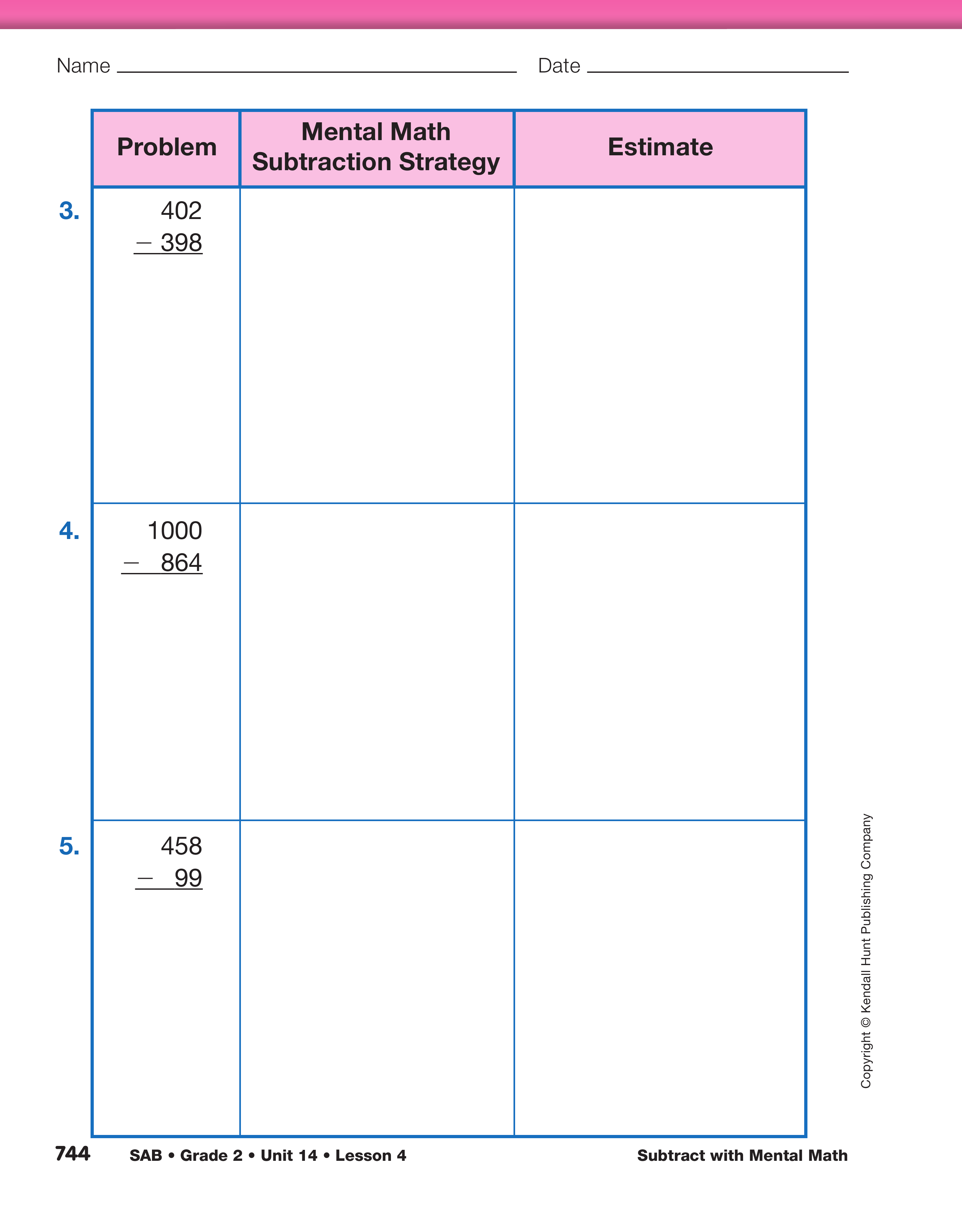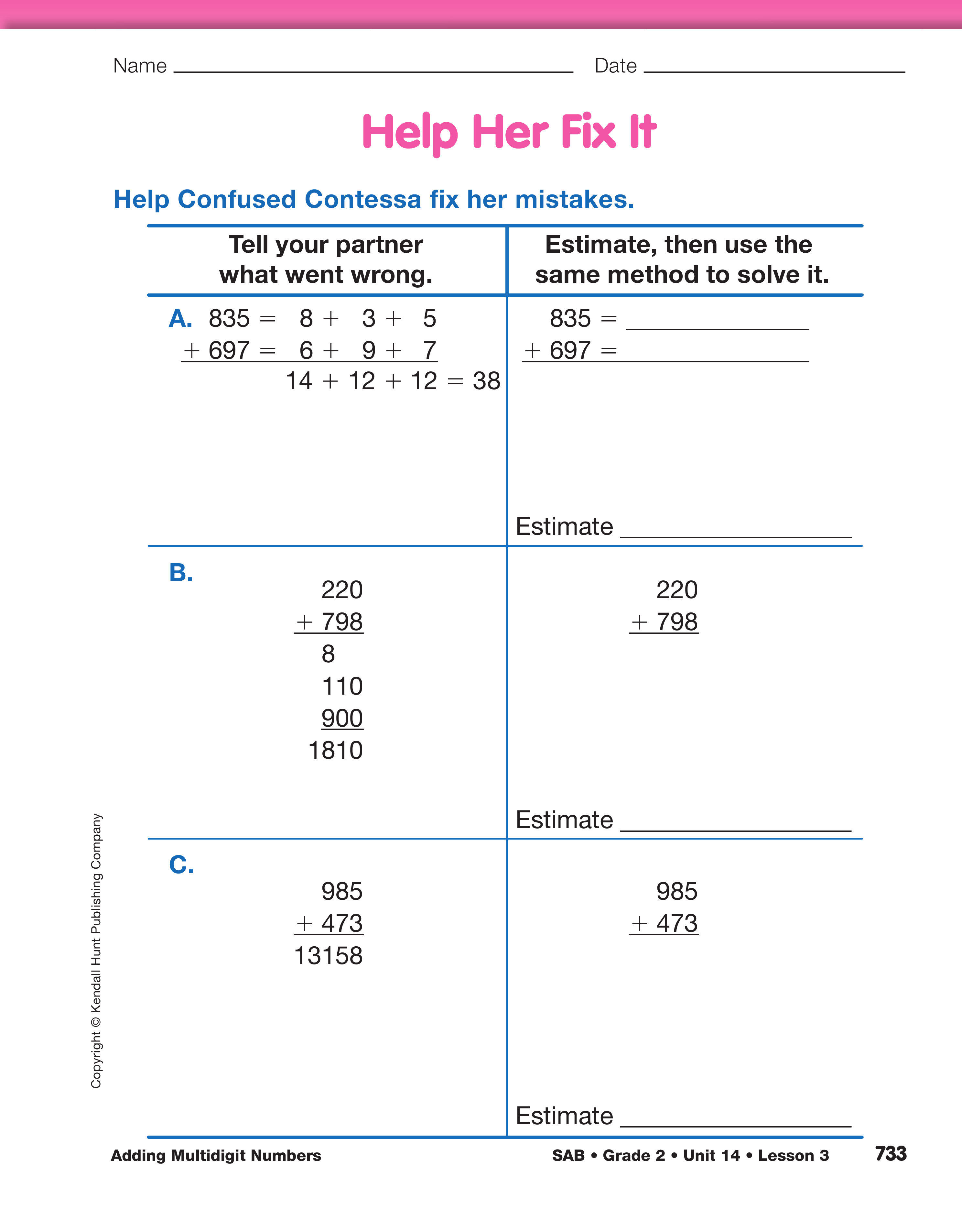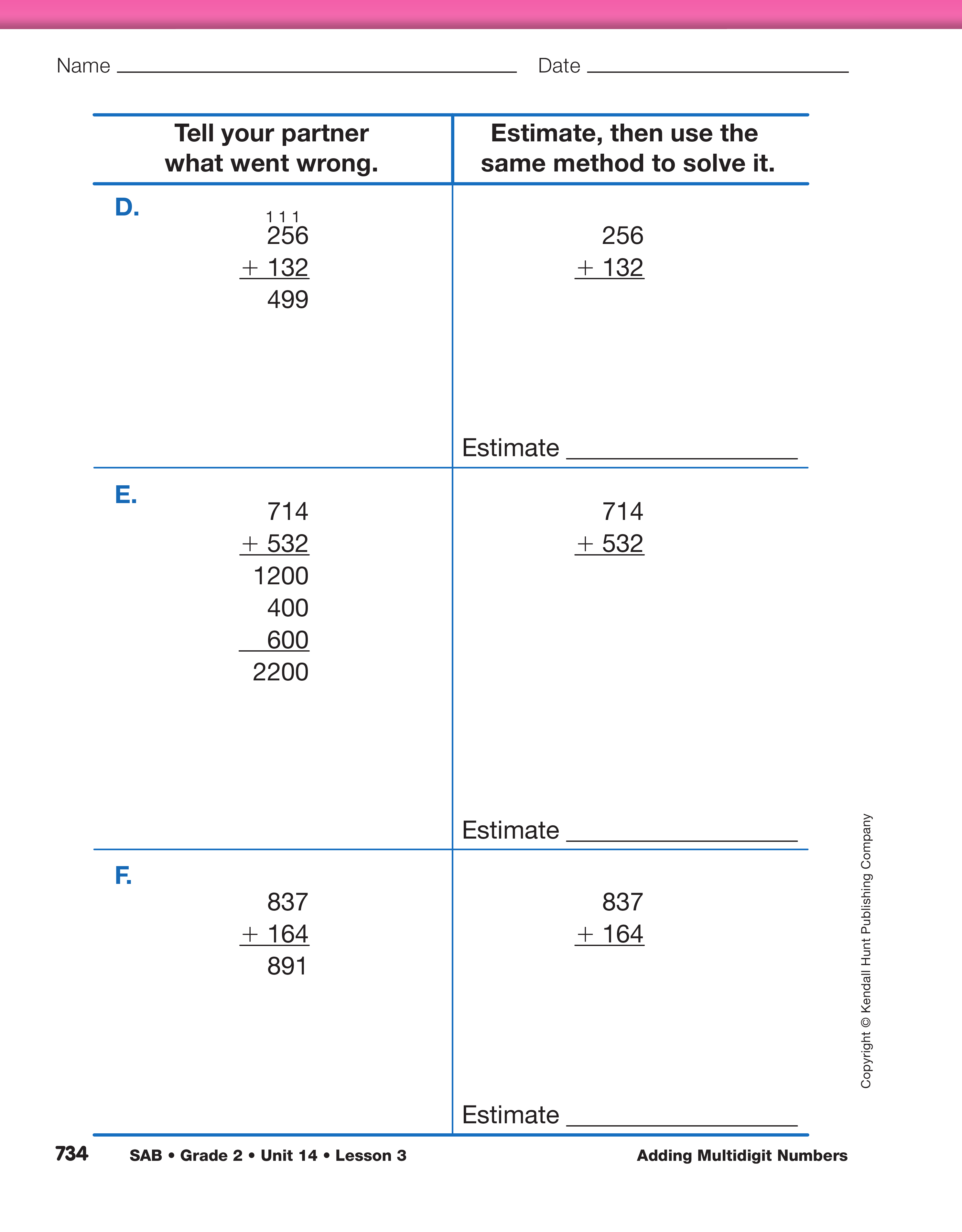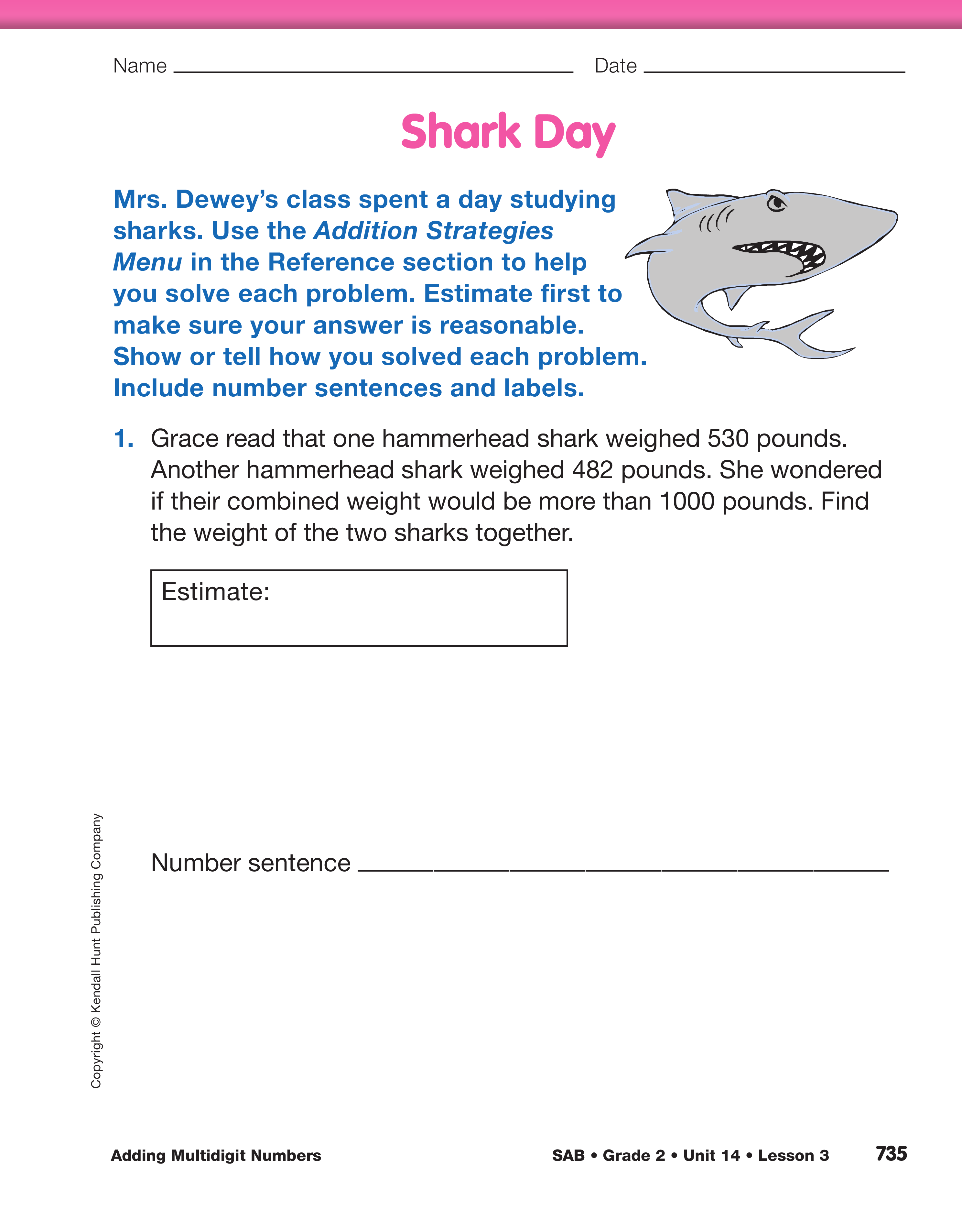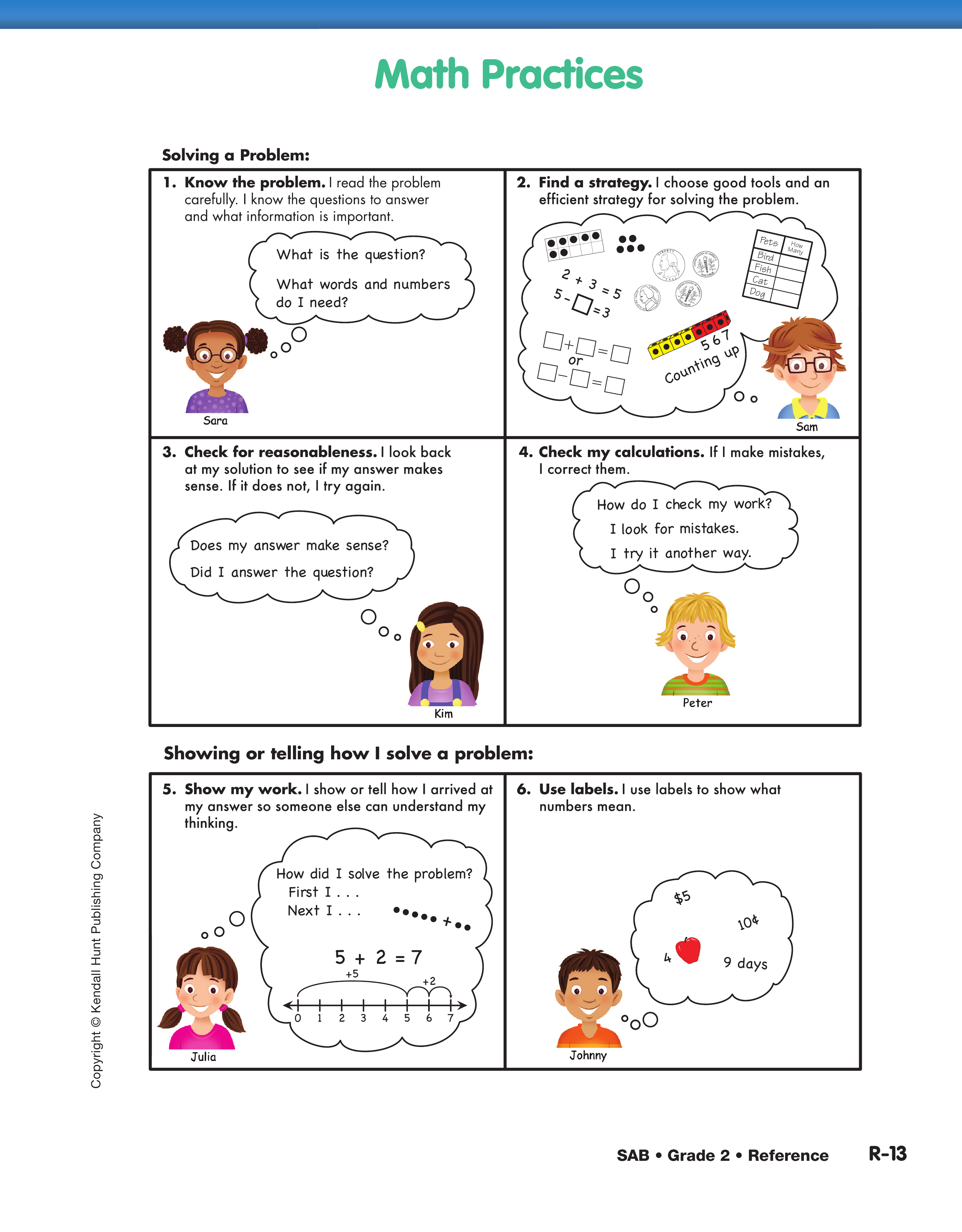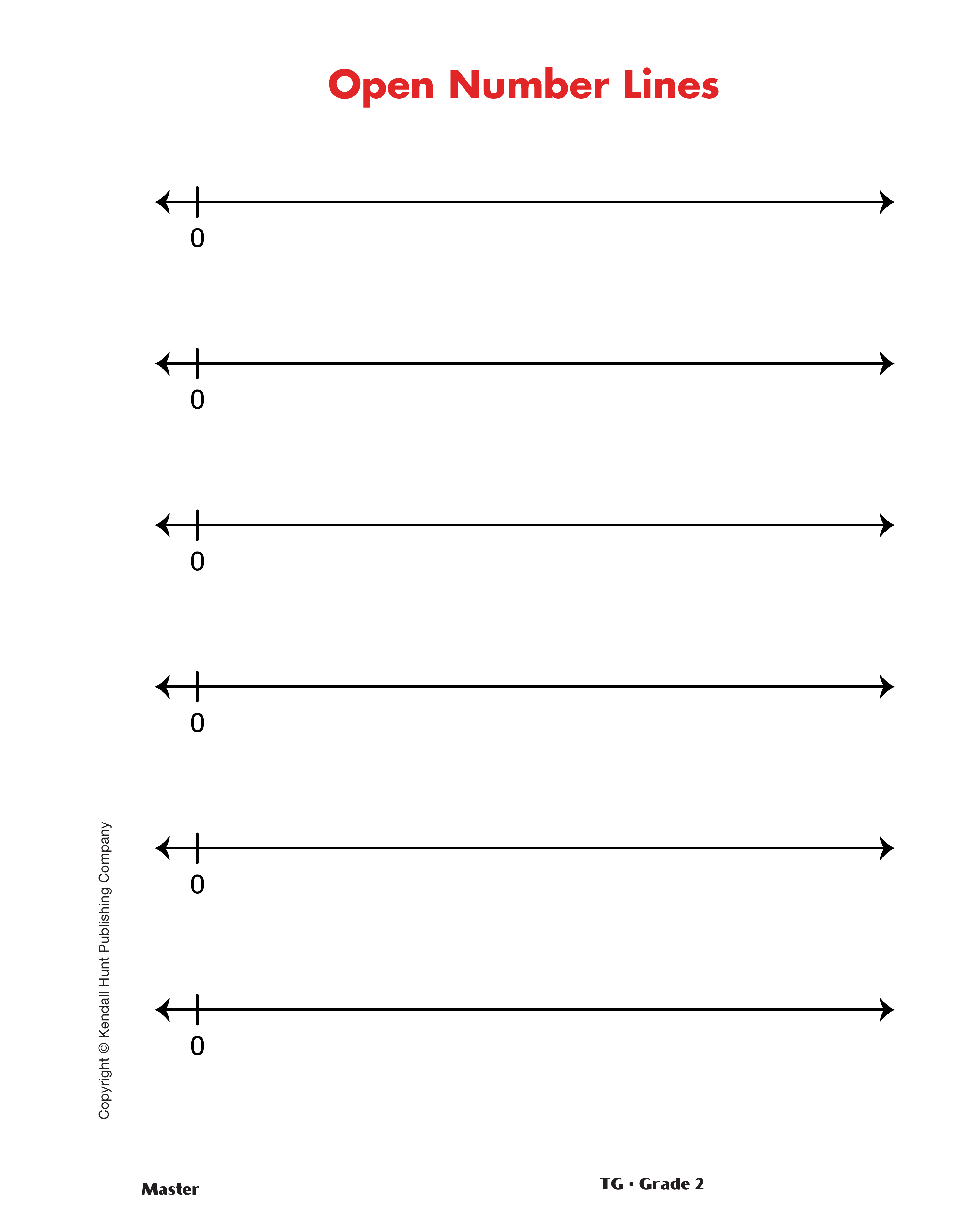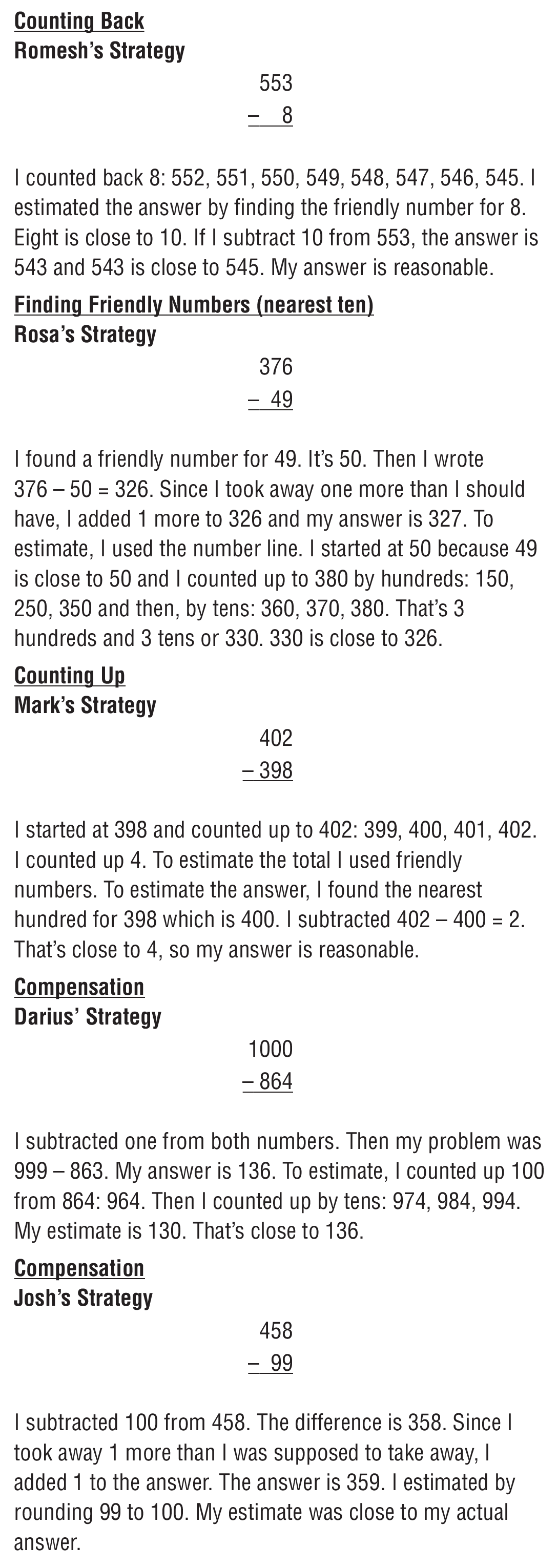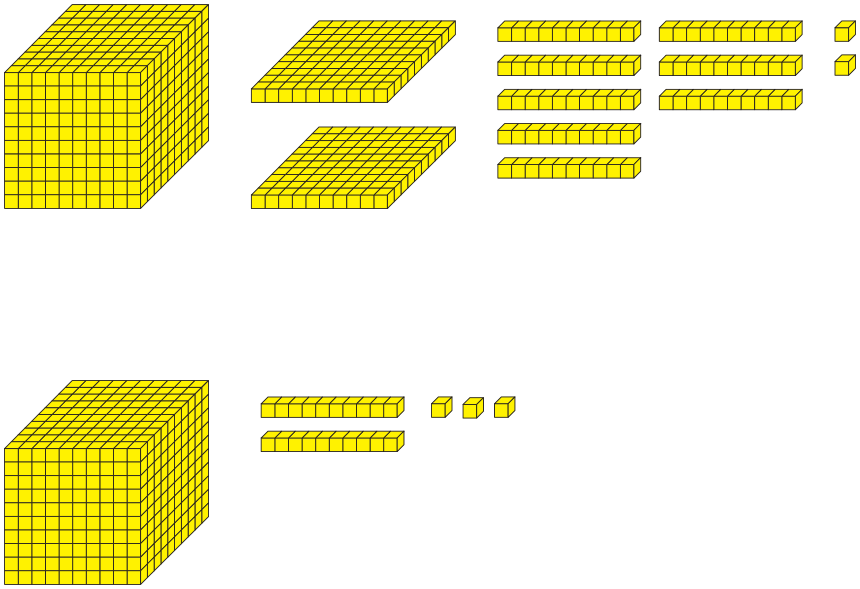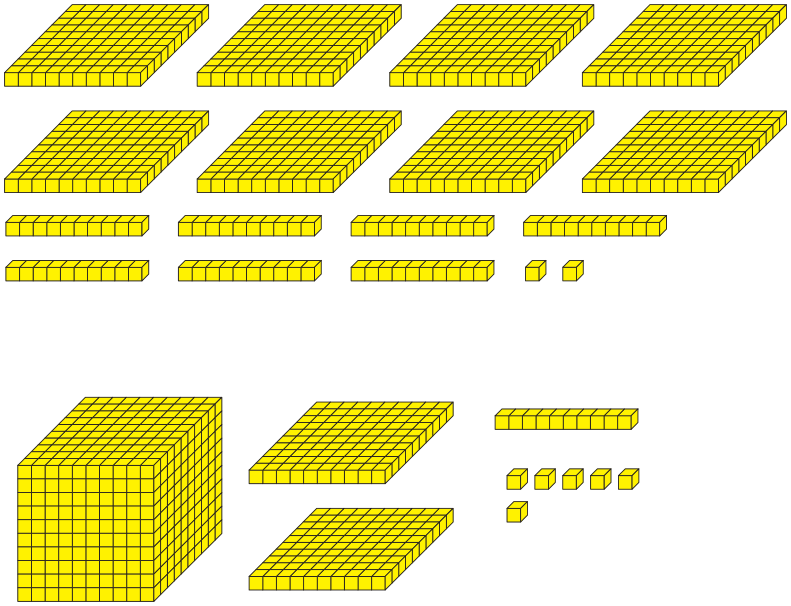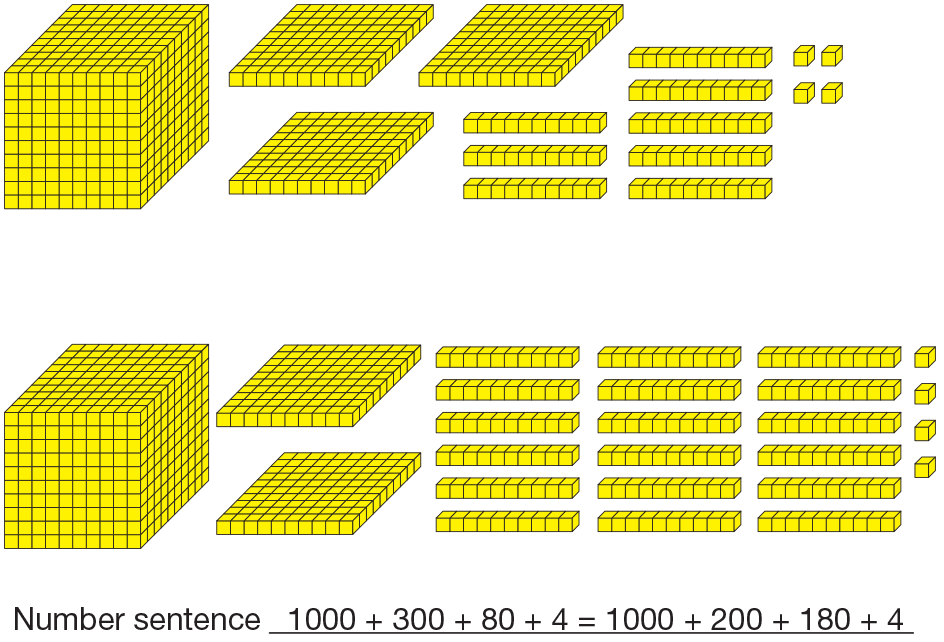Subtract with Mental Math
Est. Class Sessions: 2Developing the Lesson
Part 2: Subtraction Strategies for Larger Numbers
Mental Math Strategies to Find Differences. Use a display of the Mental Math Subtraction Strategies pages in the Student Activity Book to explain the activity. After students solve each problem, have them estimate the differences to check for reasonableness. Encourage students to refer to the Subtraction Strategies Menu in the Student Activity Book Reference section and to try to use a variety of mental math strategies to find the differences. Have open number lines and base-ten pieces readily available. Students may work in pairs or work independently and then discuss strategies with partners. See Figure 4 for possible strategies for finding the exact answers and estimates.
Have students share their strategies for solving multidigit subtraction problems. If they finish early, encourage students to solve the problems in more than one way. Help students develop their own mental math strategies and understand why various subtraction strategies work before they move on to paper-and-pencil methods.














